Cover Letter
Learn how to create a Perfect cover letter to get the attention of hiring managers. Follow our step-by-step guide to know how to write a cover letter that enhance your job application
1000+ Reviews on Trustpilot

Cover Letter
Learn how to create a Perfect cover letter to get the attention of hiring managers. Follow our step-by-step guide to know how to write a cover letter that enhance your job application
1000+ Reviews on Trustpilot

Cover Letter
Learn how to create a Perfect cover letter to get the attention of hiring managers. Follow our step-by-step guide to know how to write a cover letter that enhance your job application
1000+ Reviews on Trustpilot

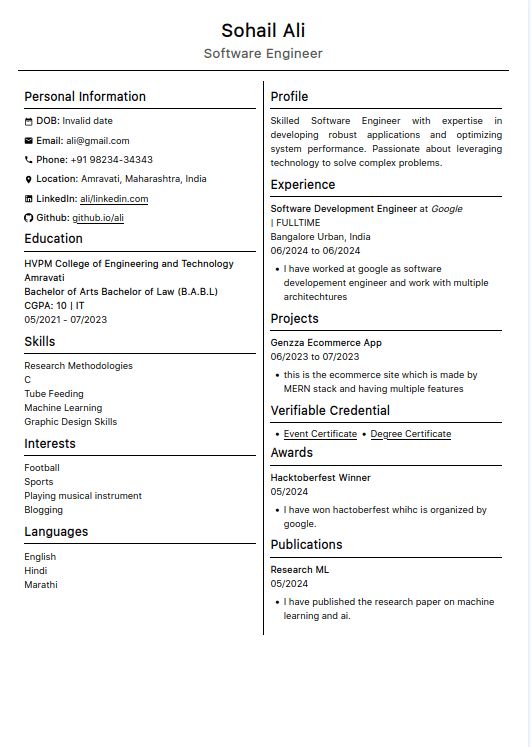
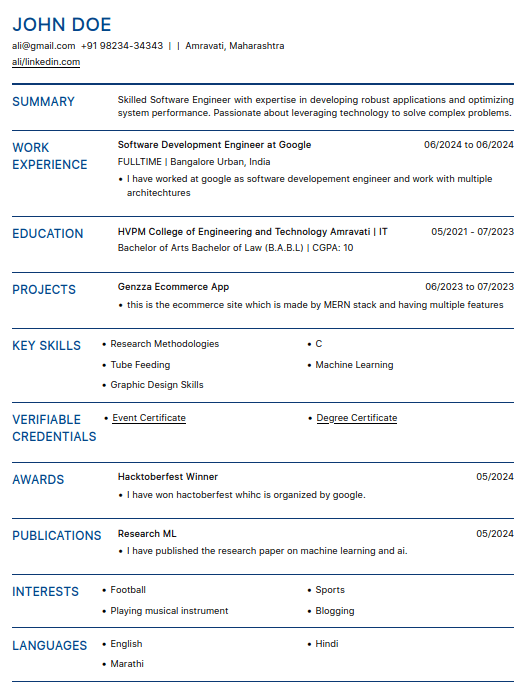
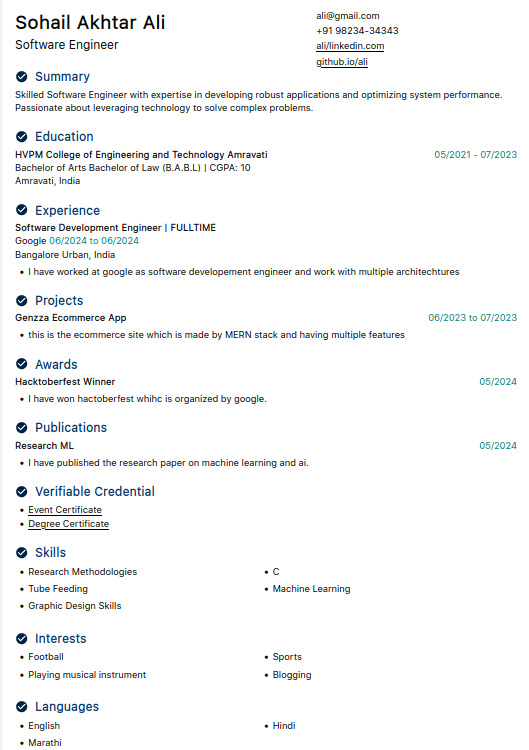
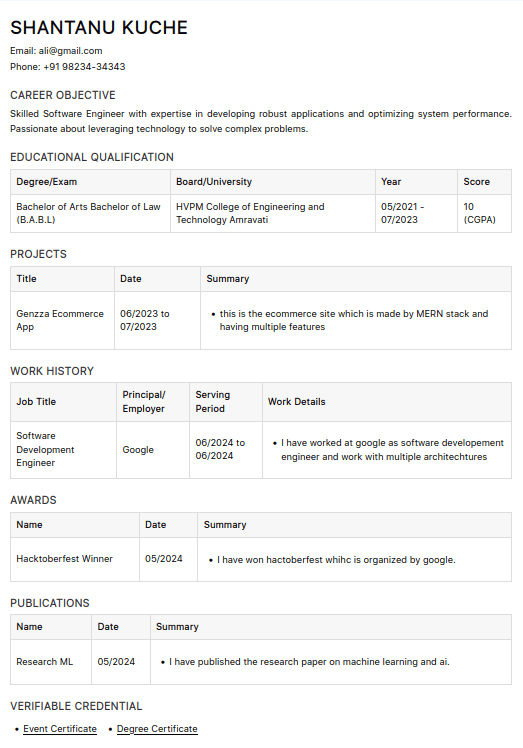
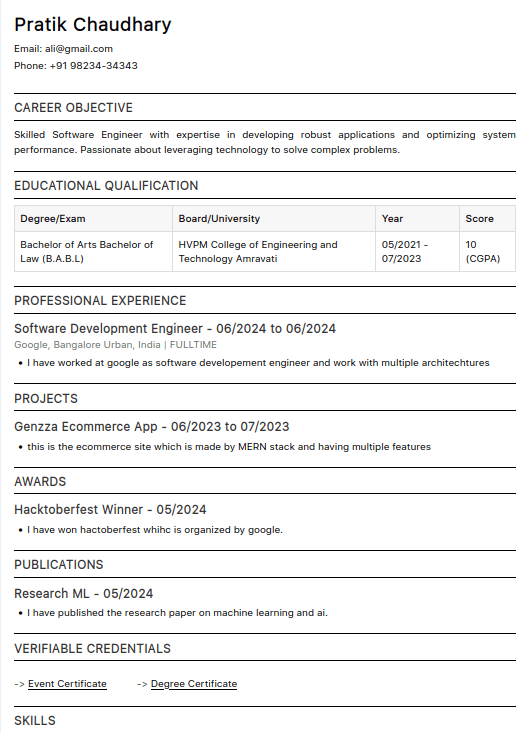
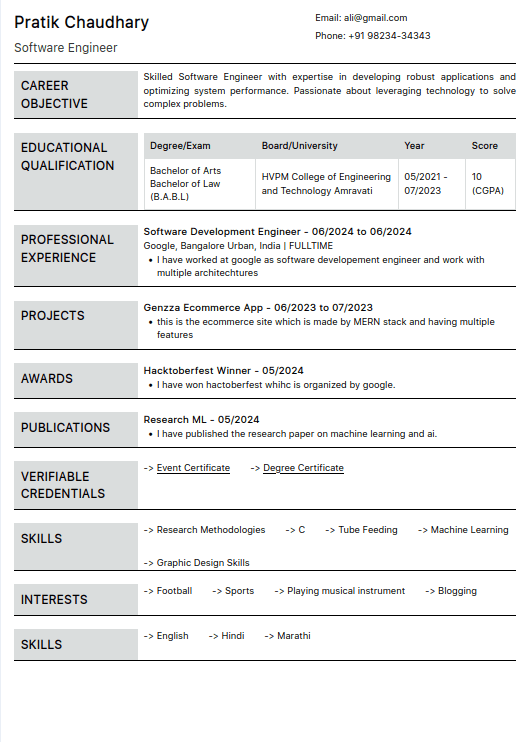












A cover letter is your opportunity to make a personal connection with a potential employer and to explain why you’re the ideal candidate for the job. While your resume outlines your skills and experiences, the cover letter allows you to showcase your personality, enthusiasm, and understanding of the role.
In this guide, we’ll walk you through the process of writing a cover letter that not only complements your resume but also makes you stand out from other applicants.
A cover letter is your opportunity to make a personal connection with a potential employer and to explain why you’re the ideal candidate for the job. While your resume outlines your skills and experiences, the cover letter allows you to showcase your personality, enthusiasm, and understanding of the role.
In this guide, we’ll walk you through the process of writing a cover letter that not only complements your resume but also makes you stand out from other applicants.
A cover letter is your opportunity to make a personal connection with a potential employer and to explain why you’re the ideal candidate for the job. While your resume outlines your skills and experiences, the cover letter allows you to showcase your personality, enthusiasm, and understanding of the role.
In this guide, we’ll walk you through the process of writing a cover letter that not only complements your resume but also makes you stand out from other applicants.
1. Understanding the Purpose of a Cover Letter
Before diving into the writing process, it’s important to understand what a cover letter is meant to accomplish. Unlike a resume, which provides a detailed account of your work history and qualifications, a cover letter is a tailored message to the hiring manager that:
Introduces you and the position you’re applying for.
Highlights your most relevant skills and experiences.
Explains why you’re interested in the role and the company.
Encourages the employer to read your resume and invite you for an interview.
1. Understanding the Purpose of a Cover Letter
Before diving into the writing process, it’s important to understand what a cover letter is meant to accomplish. Unlike a resume, which provides a detailed account of your work history and qualifications, a cover letter is a tailored message to the hiring manager that:
Introduces you and the position you’re applying for.
Highlights your most relevant skills and experiences.
Explains why you’re interested in the role and the company.
Encourages the employer to read your resume and invite you for an interview.
1. Understanding the Purpose of a Cover Letter
Before diving into the writing process, it’s important to understand what a cover letter is meant to accomplish. Unlike a resume, which provides a detailed account of your work history and qualifications, a cover letter is a tailored message to the hiring manager that:
Introduces you and the position you’re applying for.
Highlights your most relevant skills and experiences.
Explains why you’re interested in the role and the company.
Encourages the employer to read your resume and invite you for an interview.
2. Formatting Your Cover Letter
Your cover letter should follow a professional format, ensuring that it’s easy to read and visually appealing. Here’s a basic structure to follow:
Header: Include your contact information at the top, followed by the date, and then the employer’s contact information.
Salutation: Address the letter to a specific person whenever possible. If you don’t have a name, use a professional greeting like “Dear Hiring Manager.”
Introduction: Start with a strong opening that grabs the reader’s attention and states the purpose of your letter.
Body: Use one to three paragraphs to explain why you’re a great fit for the role. Focus on specific experiences and skills that align with the job description.
Conclusion: Close with a call to action, expressing your enthusiasm for the role and inviting further communication.
Signature: End with a professional closing (e.g., “Sincerely”) and your typed name. If submitting a hard copy, leave space for your signature.
2. Formatting Your Cover Letter
Your cover letter should follow a professional format, ensuring that it’s easy to read and visually appealing. Here’s a basic structure to follow:
Header: Include your contact information at the top, followed by the date, and then the employer’s contact information.
Salutation: Address the letter to a specific person whenever possible. If you don’t have a name, use a professional greeting like “Dear Hiring Manager.”
Introduction: Start with a strong opening that grabs the reader’s attention and states the purpose of your letter.
Body: Use one to three paragraphs to explain why you’re a great fit for the role. Focus on specific experiences and skills that align with the job description.
Conclusion: Close with a call to action, expressing your enthusiasm for the role and inviting further communication.
Signature: End with a professional closing (e.g., “Sincerely”) and your typed name. If submitting a hard copy, leave space for your signature.
2. Formatting Your Cover Letter
Your cover letter should follow a professional format, ensuring that it’s easy to read and visually appealing. Here’s a basic structure to follow:
Header: Include your contact information at the top, followed by the date, and then the employer’s contact information.
Salutation: Address the letter to a specific person whenever possible. If you don’t have a name, use a professional greeting like “Dear Hiring Manager.”
Introduction: Start with a strong opening that grabs the reader’s attention and states the purpose of your letter.
Body: Use one to three paragraphs to explain why you’re a great fit for the role. Focus on specific experiences and skills that align with the job description.
Conclusion: Close with a call to action, expressing your enthusiasm for the role and inviting further communication.
Signature: End with a professional closing (e.g., “Sincerely”) and your typed name. If submitting a hard copy, leave space for your signature.
3. Writing a Compelling Introduction
The introduction is your chance to make a positive first impression. Start with a strong, attention-grabbing sentence that sets the tone for the rest of the letter. Mention the position you’re applying for and how you discovered the job opening. If you were referred by someone within the company, mention their name here.
Example:
“I am writing to express my interest in the Marketing Manager position at ABC Corporation, as advertised on your website. With over five years of experience in digital marketing and a proven track record of driving brand growth, I am excited about the opportunity to contribute to your team.”
3. Writing a Compelling Introduction
The introduction is your chance to make a positive first impression. Start with a strong, attention-grabbing sentence that sets the tone for the rest of the letter. Mention the position you’re applying for and how you discovered the job opening. If you were referred by someone within the company, mention their name here.
Example:
“I am writing to express my interest in the Marketing Manager position at ABC Corporation, as advertised on your website. With over five years of experience in digital marketing and a proven track record of driving brand growth, I am excited about the opportunity to contribute to your team.”
3. Writing a Compelling Introduction
The introduction is your chance to make a positive first impression. Start with a strong, attention-grabbing sentence that sets the tone for the rest of the letter. Mention the position you’re applying for and how you discovered the job opening. If you were referred by someone within the company, mention their name here.
Example:
“I am writing to express my interest in the Marketing Manager position at ABC Corporation, as advertised on your website. With over five years of experience in digital marketing and a proven track record of driving brand growth, I am excited about the opportunity to contribute to your team.”
4. Showcasing Your Relevant Experience
In the body of your cover letter, focus on your most relevant experiences and skills. Rather than simply repeating what’s on your resume, use this space to provide context and explain how your past work has prepared you for this role. Be specific, and whenever possible, quantify your achievements to demonstrate your impact.
Example
4. Showcasing Your Relevant Experience
In the body of your cover letter, focus on your most relevant experiences and skills. Rather than simply repeating what’s on your resume, use this space to provide context and explain how your past work has prepared you for this role. Be specific, and whenever possible, quantify your achievements to demonstrate your impact.
Example
4. Showcasing Your Relevant Experience
In the body of your cover letter, focus on your most relevant experiences and skills. Rather than simply repeating what’s on your resume, use this space to provide context and explain how your past work has prepared you for this role. Be specific, and whenever possible, quantify your achievements to demonstrate your impact.
Example
5. Show Your Knowledge about the Company
Employers want to know that you’re not just interested in any job, but in their job. Show that you’ve done your homework by mentioning something specific about the company, such as a recent achievement, project, or initiative that you admire. Explain why you’re drawn to the company and how your values align with theirs.
Example:
“I am particularly impressed by ABC Corporation’s commitment to innovation and sustainability. Your recent initiative to reduce the company’s carbon footprint aligns with my personal values, and I am excited about the prospect of contributing to such forward-thinking projects.”
5. Show Your Knowledge about the Company
Employers want to know that you’re not just interested in any job, but in their job. Show that you’ve done your homework by mentioning something specific about the company, such as a recent achievement, project, or initiative that you admire. Explain why you’re drawn to the company and how your values align with theirs.
Example:
“I am particularly impressed by ABC Corporation’s commitment to innovation and sustainability. Your recent initiative to reduce the company’s carbon footprint aligns with my personal values, and I am excited about the prospect of contributing to such forward-thinking projects.”
5. Show Your Knowledge about the Company
Employers want to know that you’re not just interested in any job, but in their job. Show that you’ve done your homework by mentioning something specific about the company, such as a recent achievement, project, or initiative that you admire. Explain why you’re drawn to the company and how your values align with theirs.
Example:
“I am particularly impressed by ABC Corporation’s commitment to innovation and sustainability. Your recent initiative to reduce the company’s carbon footprint aligns with my personal values, and I am excited about the prospect of contributing to such forward-thinking projects.”
6. Crafting a Strong Conclusion
Your closing paragraph should reinforce your enthusiasm for the role and encourage the employer to take the next step. Politely suggest an interview or further discussion and express your appreciation for their time and consideration.
Example:
“I would welcome the opportunity to discuss how my experience and skills can contribute to the continued success of ABC Corporation. Thank you for considering my application. I look forward to the possibility of working together and am available for an interview at your earliest convenience.”
6. Crafting a Strong Conclusion
Your closing paragraph should reinforce your enthusiasm for the role and encourage the employer to take the next step. Politely suggest an interview or further discussion and express your appreciation for their time and consideration.
Example:
“I would welcome the opportunity to discuss how my experience and skills can contribute to the continued success of ABC Corporation. Thank you for considering my application. I look forward to the possibility of working together and am available for an interview at your earliest convenience.”
6. Crafting a Strong Conclusion
Your closing paragraph should reinforce your enthusiasm for the role and encourage the employer to take the next step. Politely suggest an interview or further discussion and express your appreciation for their time and consideration.
Example:
“I would welcome the opportunity to discuss how my experience and skills can contribute to the continued success of ABC Corporation. Thank you for considering my application. I look forward to the possibility of working together and am available for an interview at your earliest convenience.”
7. Proofreading and Finalizing Your Cover Letter
Before sending your cover letter, take the time to proofread it carefully. Look for any spelling or grammatical errors, and make sure the tone is professional and positive. A well-written cover letter should be concise—no longer than one page—and free of unnecessary jargon.
7. Proofreading and Finalizing Your Cover Letter
Before sending your cover letter, take the time to proofread it carefully. Look for any spelling or grammatical errors, and make sure the tone is professional and positive. A well-written cover letter should be concise—no longer than one page—and free of unnecessary jargon.
7. Proofreading and Finalizing Your Cover Letter
Before sending your cover letter, take the time to proofread it carefully. Look for any spelling or grammatical errors, and make sure the tone is professional and positive. A well-written cover letter should be concise—no longer than one page—and free of unnecessary jargon.
A well-written cover letter can set you apart from other applicants and significantly increase your chances of landing an interview. By following this step-by-step guide, you’ll be able to write a cover letter that not only complements your resume but also provides a compelling argument for why you’re the best candidate for the job.
Remember, each cover letter should be tailored to the specific job and company you’re applying to. Take the time to research the company, understand the job requirements, and highlight the experiences that make you the perfect fit. With a strong cover letter, you’re one step closer to securing the job you’ve been aiming for.
A well-written cover letter can set you apart from other applicants and significantly increase your chances of landing an interview. By following this step-by-step guide, you’ll be able to write a cover letter that not only complements your resume but also provides a compelling argument for why you’re the best candidate for the job.
Remember, each cover letter should be tailored to the specific job and company you’re applying to. Take the time to research the company, understand the job requirements, and highlight the experiences that make you the perfect fit. With a strong cover letter, you’re one step closer to securing the job you’ve been aiming for.
A well-written cover letter can set you apart from other applicants and significantly increase your chances of landing an interview. By following this step-by-step guide, you’ll be able to write a cover letter that not only complements your resume but also provides a compelling argument for why you’re the best candidate for the job.
Remember, each cover letter should be tailored to the specific job and company you’re applying to. Take the time to research the company, understand the job requirements, and highlight the experiences that make you the perfect fit. With a strong cover letter, you’re one step closer to securing the job you’ve been aiming for.
Cover Letter Builder FAQ
Cover Letter Builder FAQ
Cover Letter Builder FAQ
What is a Resume?
A resume is a formal document that provides an overview of your professional qualifications, including your work experience, education, skills, and achievements. It's typically used to apply for jobs, giving potential employers a snapshot of your background and suitability for a specific role. A well-crafted resume highlights your strengths and is often your first opportunity to make a strong impression.
What is a Resume?
A resume is a formal document that provides an overview of your professional qualifications, including your work experience, education, skills, and achievements. It's typically used to apply for jobs, giving potential employers a snapshot of your background and suitability for a specific role. A well-crafted resume highlights your strengths and is often your first opportunity to make a strong impression.
What is a Resume?
A resume is a formal document that provides an overview of your professional qualifications, including your work experience, education, skills, and achievements. It's typically used to apply for jobs, giving potential employers a snapshot of your background and suitability for a specific role. A well-crafted resume highlights your strengths and is often your first opportunity to make a strong impression.
How do i create my first resume?
A resume is a formal document that provides an overview of your professional qualifications, including your work experience, education, skills, and achievements. It's typically used to apply for jobs, giving potential employers a snapshot of your background and suitability for a specific role. A well-crafted resume highlights your strengths and is often your first opportunity to make a strong impression.
How do i create my first resume?
A resume is a formal document that provides an overview of your professional qualifications, including your work experience, education, skills, and achievements. It's typically used to apply for jobs, giving potential employers a snapshot of your background and suitability for a specific role. A well-crafted resume highlights your strengths and is often your first opportunity to make a strong impression.
How do i create my first resume?
A resume is a formal document that provides an overview of your professional qualifications, including your work experience, education, skills, and achievements. It's typically used to apply for jobs, giving potential employers a snapshot of your background and suitability for a specific role. A well-crafted resume highlights your strengths and is often your first opportunity to make a strong impression.
What should I include in my resume?
Your resume should include your contact information, a professional summary or objective, work experience, education, skills, and any relevant certifications or accomplishments. Tailoring your resume to the job you're applying for can increase your chances of standing out. 2. How long should my resume be?
What should I include in my resume?
Your resume should include your contact information, a professional summary or objective, work experience, education, skills, and any relevant certifications or accomplishments. Tailoring your resume to the job you're applying for can increase your chances of standing out. 2. How long should my resume be?
What should I include in my resume?
Your resume should include your contact information, a professional summary or objective, work experience, education, skills, and any relevant certifications or accomplishments. Tailoring your resume to the job you're applying for can increase your chances of standing out. 2. How long should my resume be?
Should I include a photo on my resume?
The answer is No. Including a photo on your resume is not recommended as it can distract the recruiter HR managers. Most of the companies use Applicant tracking system (ATS) to check the Resume. Graphics should possibly not be scanned by the ATS System. So, do not add any type of images in your resume.
Should I include a photo on my resume?
The answer is No. Including a photo on your resume is not recommended as it can distract the recruiter HR managers. Most of the companies use Applicant tracking system (ATS) to check the Resume. Graphics should possibly not be scanned by the ATS System. So, do not add any type of images in your resume.
Should I include a photo on my resume?
The answer is No. Including a photo on your resume is not recommended as it can distract the recruiter HR managers. Most of the companies use Applicant tracking system (ATS) to check the Resume. Graphics should possibly not be scanned by the ATS System. So, do not add any type of images in your resume.
What's the difference between a resume and a CV?
A resume is a informational document, typically one to two pages, that highlights your relevant work experience, skills, and education. A CV (Curriculum Vitae) is more detailed, often used for academic, research, or international positions, and includes a comprehensive overview of your professional history, publications, and other accomplishments.
What's the difference between a resume and a CV?
A resume is a informational document, typically one to two pages, that highlights your relevant work experience, skills, and education. A CV (Curriculum Vitae) is more detailed, often used for academic, research, or international positions, and includes a comprehensive overview of your professional history, publications, and other accomplishments.
What's the difference between a resume and a CV?
A resume is a informational document, typically one to two pages, that highlights your relevant work experience, skills, and education. A CV (Curriculum Vitae) is more detailed, often used for academic, research, or international positions, and includes a comprehensive overview of your professional history, publications, and other accomplishments.
How often should I update my resume?
You should update your resume regularly, especially after gaining new experience, skills, or certifications. It's a good practice to revisit and revise your resume every six months or whenever you're preparing to apply for a new job.
How often should I update my resume?
You should update your resume regularly, especially after gaining new experience, skills, or certifications. It's a good practice to revisit and revise your resume every six months or whenever you're preparing to apply for a new job.
How often should I update my resume?
You should update your resume regularly, especially after gaining new experience, skills, or certifications. It's a good practice to revisit and revise your resume every six months or whenever you're preparing to apply for a new job.
Build Your Resume
Truresume offers free Resume Templates to help you craft a professional resume quickly and easily.

Build Your Resume
Truresume offers free Resume Templates to help you craft a professional resume quickly and easily.

Build Your Resume
Truresume offers free Resume Templates to help you craft a professional resume quickly and easily.

Our Featured Articles

resume
Best Resume Format for Freshers in 2025: Your Ultimate Guide to Getting Noticed
3 Jun 2025

ATS
Why TruResume ATS Friendly Resume Builder Tools Are Best for Resume Building
3 Jun 2025

Resume
Why ATS-Friendly Resumes Are Important to Pass Initial Screening
3 Jun 2025

Resume
What’s the Difference Between CV and Resume?
3 Jun 2025

Resume
How to Write a Resume for Freshers with No Experience
3 Jun 2025

Resume
What to Include or Not in Resume 2025 as a Fresher
3 Jun 2025
Our Featured Articles

resume
Best Resume Format for Freshers in 2025: Your Ultimate Guide to Getting Noticed
3 Jun 2025

ATS
Why TruResume ATS Friendly Resume Builder Tools Are Best for Resume Building
3 Jun 2025

Resume
Why ATS-Friendly Resumes Are Important to Pass Initial Screening
3 Jun 2025

Resume
What’s the Difference Between CV and Resume?
3 Jun 2025
Our Featured Articles

resume
Best Resume Format for Freshers in 2025: Your Ultimate Guide to Getting Noticed
3 Jun 2025

ATS
Why TruResume ATS Friendly Resume Builder Tools Are Best for Resume Building
3 Jun 2025

Resume
Why ATS-Friendly Resumes Are Important to Pass Initial Screening
3 Jun 2025

Resume
What’s the Difference Between CV and Resume?
3 Jun 2025